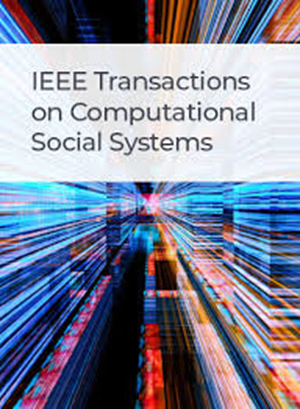基于vae的多模态解纠缠融合网络用于多模态零射击学习
IF 4.5
2区 计算机科学
Q1 COMPUTER SCIENCE, CYBERNETICS
IEEE Transactions on Computational Social Systems
Pub Date : 2025-07-08
DOI:10.1109/TCSS.2025.3575939
引用次数: 0
摘要
由于可见类和未见类之间的域转移以及不同模态之间的语义差距,解决多模态零射击学习任务中的偏差问题具有挑战性。为了解决这些挑战,我们提出了一种多模态解纠缠融合网络(MDFN),该网络统一了多模态零射击学习的类嵌入空间。mfn利用两个分支中的特征解纠缠变分自编码器(FD-VAE)将单模态特征分离为特定于模态的表示,这些表示在语义上一致且不相关,其中语义在类中共享。特别地,将语义一致的表示和单峰特征结合起来,以残差的形式保留原始特征的语义。此外,采用两个分支的多模态条件VAE (MC-VAE)来学习具有模态特定条件的跨模态交互。最后,将MC-VAE获得的互补多模态表示编码到一个融合网络(FN)中,该网络具有自适应边缘中心损失(SAMC-loss),用于预测嵌入形式中的目标类标签。SAMC-loss通过学习域样本之间的距离,提高了类内紧密性和类间可分离性。在零射击和新闻事件数据集上的实验证明了mfn的优越性能,在MMED数据集上谐波均值提高了27.2%,在SUN数据集上提高了5.1%。本文章由计算机程序翻译,如有差异,请以英文原文为准。
Multimodal Disentangled Fusion Network via VAEs for Multimodal Zero-Shot Learning
Addressing the bias problem in multimodal zero-shot learning tasks is challenging due to the domain shift between seen and unseen classes, as well as the semantic gap across different modalities. To tackle these challenges, we propose a multimodal disentangled fusion network (MDFN) that unifies the class embedding space for multimodal zero-shot learning. MDFN exploits feature disentangled variational autoencoder (FD-VAE) in two branches to distangle unimodal features into modality-specific representations that are semantically consistent and unrelated, where semantics are shared within classes. In particular, semantically consistent representations and unimodal features are integrated to retain the semantics of the original features in the form of residuals. Furthermore, multimodal conditional VAE (MC-VAE) in two branches is adopted to learn cross-modal interactions with modality-specific conditions. Finally, the complementary multimodal representations achieved by MC-VAE are encoded into a fusion network (FN) with a self-adaptive margin center loss (SAMC-loss) to predict target class labels in embedding forms. By learning the distance among domain samples, SAMC-loss promotes intraclass compactness and interclass separability. Experiments on zero-shot and news event datasets demonstrate the superior performance of MDFN, with the harmonic mean improved by 27.2% on the MMED dataset and 5.1% on the SUN dataset.
求助全文
通过发布文献求助,成功后即可免费获取论文全文。
去求助
来源期刊

IEEE Transactions on Computational Social Systems
Social Sciences-Social Sciences (miscellaneous)
CiteScore
10.00
自引率
20.00%
发文量
316
期刊介绍:
IEEE Transactions on Computational Social Systems focuses on such topics as modeling, simulation, analysis and understanding of social systems from the quantitative and/or computational perspective. "Systems" include man-man, man-machine and machine-machine organizations and adversarial situations as well as social media structures and their dynamics. More specifically, the proposed transactions publishes articles on modeling the dynamics of social systems, methodologies for incorporating and representing socio-cultural and behavioral aspects in computational modeling, analysis of social system behavior and structure, and paradigms for social systems modeling and simulation. The journal also features articles on social network dynamics, social intelligence and cognition, social systems design and architectures, socio-cultural modeling and representation, and computational behavior modeling, and their applications.
 求助内容:
求助内容: 应助结果提醒方式:
应助结果提醒方式:


